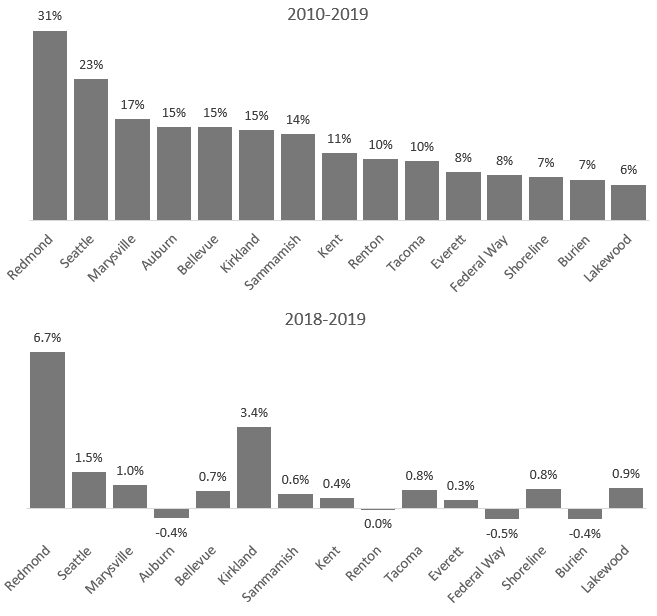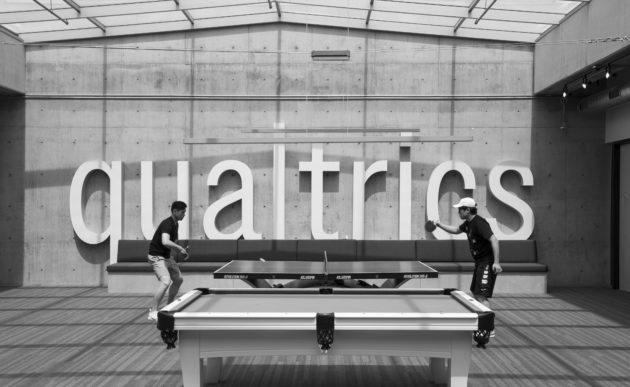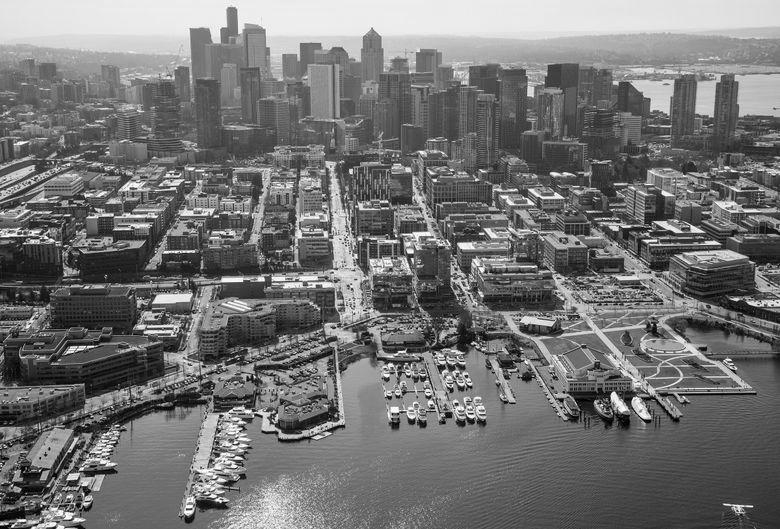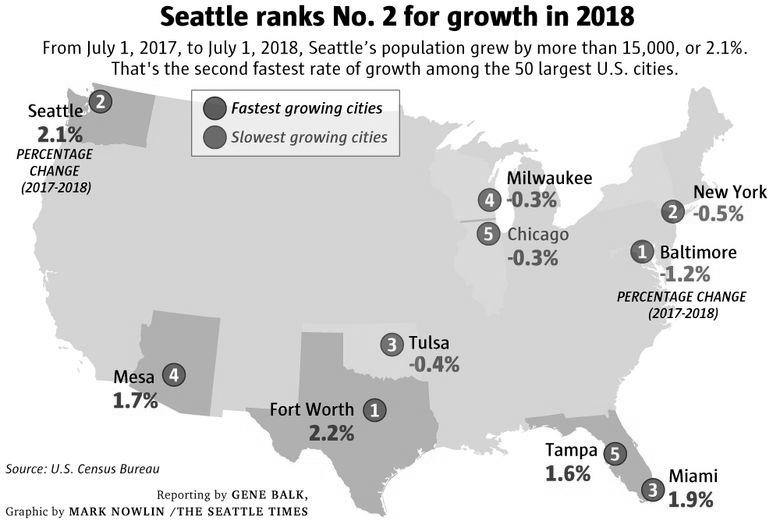In the year ending July, Seattle added 11,440 people, the highest growth rate for a large city this decade. While Seattle has added relatively few people during the last decade, its growth in recent years has been fueled by the development of the city’s Eastside. Growth in the Seattle metropolitan area is now beginning to mirror the suburban pattern seen throughout the country.
Race makeup of Seattle
Seattle’s race makeup has evolved dramatically over the last century. In the early 1900s, the city was predominantly white. As a result, many neighborhoods were racially segregated. However, this was not the case for long. As a result, the city became racially diverse in the late 1990s.
According to the U.S. Census Bureau, more than 35% of the city’s population is people of color. The most significant race group is Asian, followed by Pacific Islanders, Blacks, and Hispanics. Native Americans make up less than 1% of the population. The city’s ethnic composition is also represented by its linguistic diversity.
Between 1990 and 2010, the city’s race makeup changed dramatically. While the percentage of whites decreased, the number of Hispanic/Latino and Asian/Pacific Islander populations increased. In addition, the multiracial population continued to grow. In some areas, most people of color are Asian and Pacific Islanders. However, in other areas, there was little change.
Seattle’s population is becoming more diverse. In 2010, the city’s Black population was more than double that of the surrounding county. This change is particularly evident in areas that were previously considered racially segregated. However, in some parts of the city, the number of people of color declined. This change can be attributed to displacement. In addition, neighborhoods in Southeast and South Seattle are becoming increasingly diverse.
Seattle’s racial makeup is also reflected in housing costs. Approximately 73% of Black households are renting. As the cost of housing rises, renters can be forced to leave the city. In contrast, less than half of White households live in rented housing.

Geography
In addition to its growing population, Seattle is experiencing population dispersion. Since 1950, the city has accounted for just 5 percent of the metropolitan area’s total population. The vast majority of people have moved to the suburbs. While Seattle’s historic downtown area is densely populated, the population of the surrounding neighborhoods has remained relatively constant.
The majority of Seattle’s population is white, just over 84%. However, immigration from countries across the Pacific is accelerating. Hispanic/Latino communities accounted for 44,286 new residents. Since 1990, the area is becoming increasingly diverse. King County is home to nearly one-third of the metropolitan region’s population.
The greater Seattle area is surrounded by mountains, including the Cascade and Olympic ranges. The city is surrounded by hilly terrain, with many regions containing high-rise buildings. The city is on several hills, including Capitol Hill, First Hill, Queen Anne, and Denny. It also shares a border with Canada. In addition, Seattle is the northernmost city of at least 500,000 people in the U.S.; it is also farther north than most Canadian cities. Its latitude is about the same as that of Salzburg, Austria.
While the port’s growth fuels the city’s growth, the city has also been a significant part of the region’s economy. In the 1980s, Boeing’s cutbacks in the aerospace industry led to a recession in the area, but increased military contracts and the booming Asian aircraft market helped the economy recover. Today, the city is a global city, with over ten percent of the U.S. population.
The Seattle area is home to many lesbian, gay, bisexual, and transgender people. The city ranks second in the country for its percentage of lesbian, gay, and transgender people.
Progressive government
Proponents of progressive government policies say Seattle is experiencing a population explosion. Thousands of new residents move to the city every year, transforming its cityscape and the political climate in Washington state. The migration trend is affecting local politics, resulting in a more liberal political environment and deepening the urban-rural divide. In Seattle, elected officials are pushing progressive policies and fostering an environment where people of all backgrounds can live and work.

Seattle’s progressive government is not alone in this approach. Prominent politicians have encouraged homeless and vagrant encampments in public areas and police have been reluctant to enforce laws against drugs, public urination, and other offenses. As a result, the city’s urban landscape is littered with human waste and trash. The city’s failures are not the fault of the council, however. Council members have heroically tried to bring more services to the community, but Mayor Jenny Durkan has prevented them from executing their goals.
The city’s demographics make it difficult to determine voter sentiment, especially in a town where many people are Democrats. In addition, it’s challenging to determine what a business owner will say when asked about their business practices. A progressive government’s messaging focuses on environmental justice, policing, and social justice.
As a result, voters in Seattle tend to favor progressive candidates. The mayor and city council races are dominated by left-leaning candidates, including incumbent Mayor-elect Teresa Mosqueda. However, the city’s progressive political climate has limitations, and voters must choose between the two candidates. In the end, progressives are not united in their opinion.
Housing affordability
One of the biggest problems in Seattle is housing affordability. The city has seen an increase in rental units, but that growth has not been proportional to the population increase. The result is a large gap between supply and demand. While Seattle has made several specific efforts to increase its housing supply, this gap still exists. The Seattle region has fully utilized two federal LIHTC programs, but the pipeline for affordable housing is limited.
In the single-family housing market, Seattle home prices have skyrocketed. The median single-family home costs $820,000 and is on pace to reach $1 million in less than two years. A typical home buyer must have at least $145,000 in cash to buy a home, and households need an income of $140,000 per year to make mortgage payments. The city has tried increasing density in some single-family neighborhoods, but with mixed results.
Rents and prices have grown at a rapid pace, outpacing income. Housing cost burdens are now a displacement factor, and households can either choose to move to another area or face foreclosure and eviction. The most at risk are those in the lowest income groups.

While Seattle home prices are at an all-time high, the statewide shortage of homes has hit cities of all sizes. This has led to a statewide tsunami of escalating home prices. The solution to this problem rests on statewide standards to increase the production of homes. Increasing housing supply and wages are two critical components of the solution. However, these factors do not necessarily have a direct effect on housing affordability.
Housing affordability in Seattle is an integral part of solving the homelessness problem. Without a place to call home, homeless people cannot move forward. Seattle needs to expand its housing stock to include all types of housing. The Chamber of Commerce commissioned the McKinsey & Company report.
Traffic
Seattle’s population is on the rise, and it is the fastest-growing city in the nation. Over the last two decades, the city has gained over 21,000 new residents. That’s an increase of nearly three percent or 57 new residents daily. But it’s not just the population growth that’s interesting.
The rapid growth of the high-technology and knowledge sectors has encouraged migration to Seattle. By the late 1990s, the population of the city topped two million. This rapid growth has brought prosperity to the town, but it is also creating problems that the city has to deal with. For instance, the city’s housing market is a significant problem. It is making it impossible for middle and low-income earners to afford to house. In addition, Seattle has a high number of homeless people, and its economy is struggling.
Seattle’s growth has not come evenly. Until the 2010s, King County grew faster than Seattle. The city’s population grew by 21% in the 2010s. That’s the highest rate in more than half a century. While Seattle has constantly been growing at an average rate, the suburbs in the city have accelerated the pace of development. And the region’s suburban growth pattern is similar to the suburban design elsewhere in the country.
The city’s rapid growth tests its capacity to manage its growth. While it may not have found all the answers, it is way ahead of most places in the way it confronts growth challenges.






